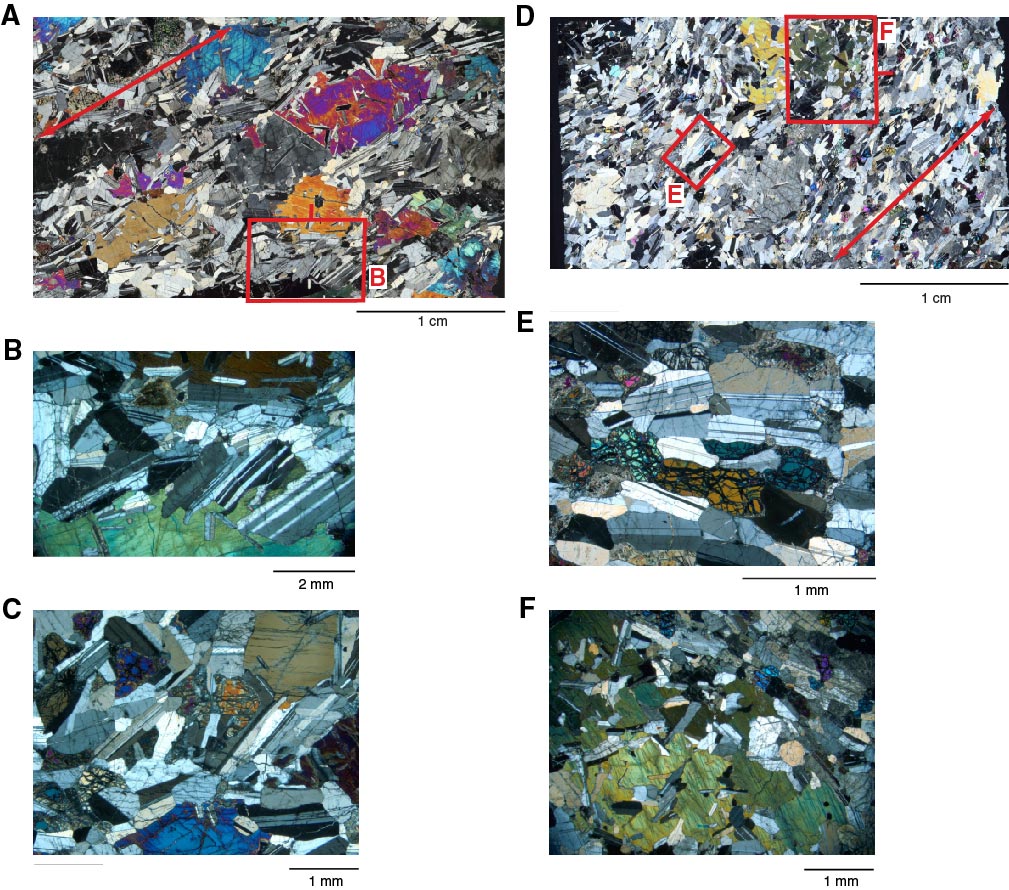
Figure F67. Clinopyroxene oikocrysts (under crossed polars). A. Elongate clinopyroxene oikocrysts in olivine gabbro (Sample 345-U1415J-5R-1, 62–64 cm [Piece 12]). Moderate olivine-plagioclase magmatic foliation wraps around the top of the oikocrysts. Red box (tick mark shows upward direction) indicates location and orientation of B. Red arrow indicates foliation orientation. B. Relatively large (2–3 mm long) plagioclase crystals partially enclosed by a clinopyroxene oikocryst. The plagioclase crystals are aligned with the dominant foliation, indicating that the pyroxene margins continued to grow after/during foliation development. C. Clinopyroxene oikocryst-bearing troctolite with northeast–southwest imbricated or tiled plagioclase crystals within a foliation running approximately horizontally in the figure. Imbrication suggests that a component of shear was involved during foliation development (Sample 345-U1415J-7G-1, 55–56 cm [Piece 8]). D. Clinopyroxene oikocryst-bearing troctolite (Sample 345-U1415J-8R-1, 79–82 cm [Piece 13]). Strong olivine-plagioclase magmatic foliation wraps around the top of the oikocrysts. Red boxes indicate location and orientation of E and F. Red arrow indicates foliation orientation. E. Strong magmatic foliation defined by annealed plagioclase and tabular olivine crystals. F. Deformed clinopyroxene oikocryst exhibiting subgrain development.

Previous | Close | Next | Top of page